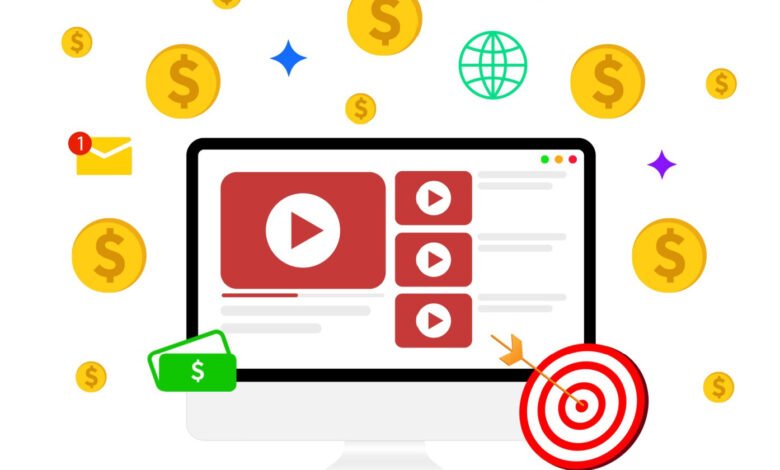YouTube Unveils Brand Pulse: Measure Your Full Brand Impact

▼ Summary
– YouTube’s new Brand Pulse Report provides a unified measurement solution for brands to track their presence across paid, creator, organic, and user-generated content on the platform.
– It uses multi-modal AI to detect brand mentions through audio, visual elements like logos, and text in titles or descriptions, linking these to viewer engagement metrics.
– The tool connects brand exposure on YouTube to increased search queries, showing how video content influences consumer behavior and intent.
– Brand Pulse helps advertisers identify effective content, benchmark against competitors, and make informed budget decisions by revealing how different channels work together.
– While promising for holistic measurement, the report is currently limited to select advertisers and its accuracy depends on AI reliability and avoiding attribution errors.
For years, marketers have faced a significant challenge in accurately measuring their brand’s complete impact on YouTube. Paid campaigns, creator collaborations, and organic content have traditionally been tracked separately, making it difficult to form a unified picture of performance. YouTube’s newly announced Brand Pulse Report aims to solve this by providing a consolidated view of a brand’s presence and performance across every part of the platform, from paid ads to user-generated videos.
The Brand Pulse Report is an AI-powered measurement tool designed to detect and quantify brand appearances throughout YouTube. It doesn’t just monitor paid placements; it also scans creator videos, organic uploads, and user-generated content. This is achieved through multi-modal AI, which analyzes several aspects of each video. The AI listens for spoken brand mentions, scans visuals for logos and product shots, and reads text in titles and descriptions. By recognizing both intentional and organic brand appearances, the tool connects these signals to key engagement metrics like Total Unique Viewers and Share of Watch Time. This gives brands unprecedented visibility into their presence, even within content they did not create or sponsor themselves.
This development is particularly notable because marketers have consistently sought better methods for measuring brand impact on YouTube that go beyond paid media. Brand Pulse addresses this need by linking paid, organic, and creator-driven exposure, offering teams a more comprehensive view of their influence. The tool also demonstrates how brand exposure on YouTube can drive “Search Lift,” showing advertisers how video content contributes to increases in branded search queries. This connection between upper-funnel video views and mid-funnel consumer intent is one of the most compelling features of the new report. As one industry expert noted, Brand Pulse helps brands connect the dots, illustrating how paid and organic videos collectively influence real consumer behaviors rather than just superficial metrics.
This initiative reflects a broader shift in the marketing industry toward holistic measurement. Advertisers across connected TV, social media, and retail media are increasingly seeking to understand brand performance within its full context, not in isolation. For YouTube, Brand Pulse reinforces its role as a comprehensive brand-building ecosystem where paid, creator, and user content interact to shape consumer behavior.
For brand and media teams, this report could address a long-standing blind spot in video marketing: the difficulty in quantifying the extended ripple effects of brand exposure. In the past, a creator’s video might boost product awareness, a pre-roll ad could reinforce it, and organic search might capture interest, but these signals remained isolated. Brand Pulse promises to unify these touchpoints, offering teams valuable insights such as how paid campaigns amplify organic and creator reach, where brand mentions are gaining natural traction, and how a brand’s visibility compares to competitors. This information can guide future collaboration strategies and ad placements to maximize incremental reach.
Furthermore, the insights from Brand Pulse may influence budget allocation. If data consistently shows that paid YouTube campaigns enhance organic or creator-driven engagement, it strengthens the argument for investing more heavily in brand-building initiatives. Previously, teams often relied solely on performance metrics like conversions or click-through rates, which do not fully capture the value of all YouTube campaigns. By illustrating how different channels support one another, the report may also highlight that reducing investment in one area could indirectly weaken others.
Currently, the Brand Pulse Report is available only to a select group of advertisers, and several questions remain regarding its implementation. Accuracy of the multi-modal AI is a key consideration, will it correctly identify a brand when a logo is partially visible, a name is mispronounced, or the context is negative? Brands may also wonder about minimum thresholds for exposure, such as how long a logo must be visible to count as meaningful. Another concern is attribution overlap; if a viewer encounters both a paid ad and an organic mention, how will the tool avoid double-counting the influence? Marketers should also remember that correlation does not always mean causation. While increases in search volume or engagement may coincide with YouTube exposure, controlled testing will still be necessary to confirm true impact.
The introduction of YouTube’s Brand Pulse Report marks a significant move toward closing a major gap in digital measurement: linking what audiences see with how they search, engage, and remember brands. If successful, it could provide marketers with a much clearer understanding of how awareness efforts on YouTube translate into tangible outcomes. Widespread adoption will depend on the tool’s data accuracy and practical usability. The potential is considerable, but its real value will be determined by how well it balances ambitious AI capabilities with reliable, real-world performance. For now, Brand Pulse points toward the future of measurement, moving beyond basic metrics like impressions and clicks to grasp a brand’s total presence across the entire YouTube ecosystem.
(Source: Search Engine Journal)





